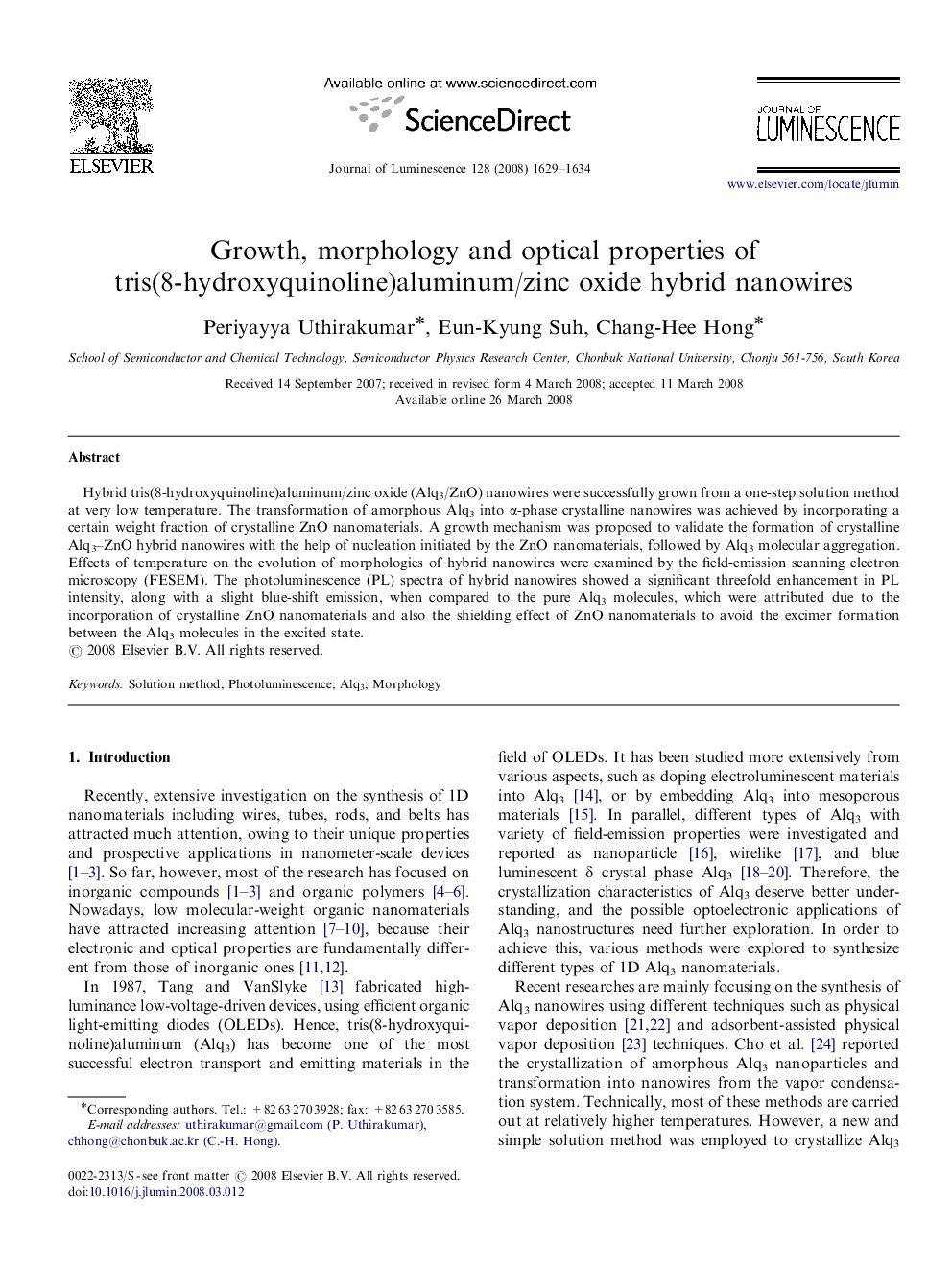| Article ID | Journal | Published Year | Pages | File Type |
|---|---|---|---|---|
| 5403047 | Journal of Luminescence | 2008 | 6 Pages |
Abstract
Hybrid tris(8-hydroxyquinoline)aluminum/zinc oxide (Alq3/ZnO) nanowires were successfully grown from a one-step solution method at very low temperature. The transformation of amorphous Alq3 into α-phase crystalline nanowires was achieved by incorporating a certain weight fraction of crystalline ZnO nanomaterials. A growth mechanism was proposed to validate the formation of crystalline Alq3-ZnO hybrid nanowires with the help of nucleation initiated by the ZnO nanomaterials, followed by Alq3 molecular aggregation. Effects of temperature on the evolution of morphologies of hybrid nanowires were examined by the field-emission scanning electron microscopy (FESEM). The photoluminescence (PL) spectra of hybrid nanowires showed a significant threefold enhancement in PL intensity, along with a slight blue-shift emission, when compared to the pure Alq3 molecules, which were attributed due to the incorporation of crystalline ZnO nanomaterials and also the shielding effect of ZnO nanomaterials to avoid the excimer formation between the Alq3 molecules in the excited state.
Related Topics
Physical Sciences and Engineering
Chemistry
Physical and Theoretical Chemistry
Authors
Periyayya Uthirakumar, Eun-Kyung Suh, Chang-Hee Hong,
